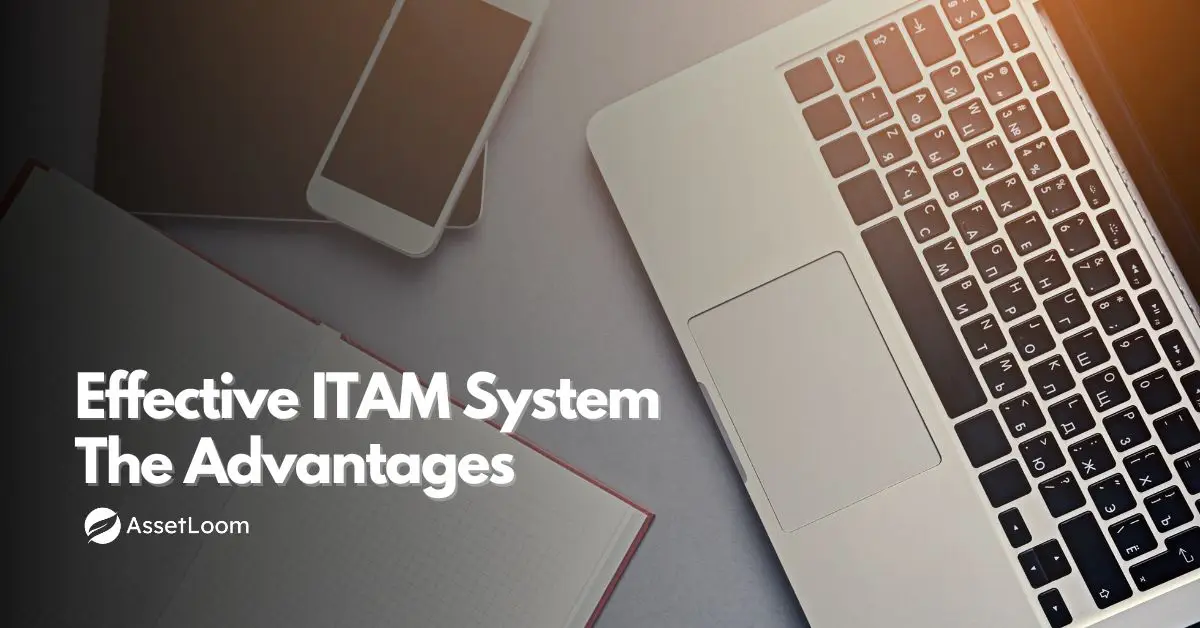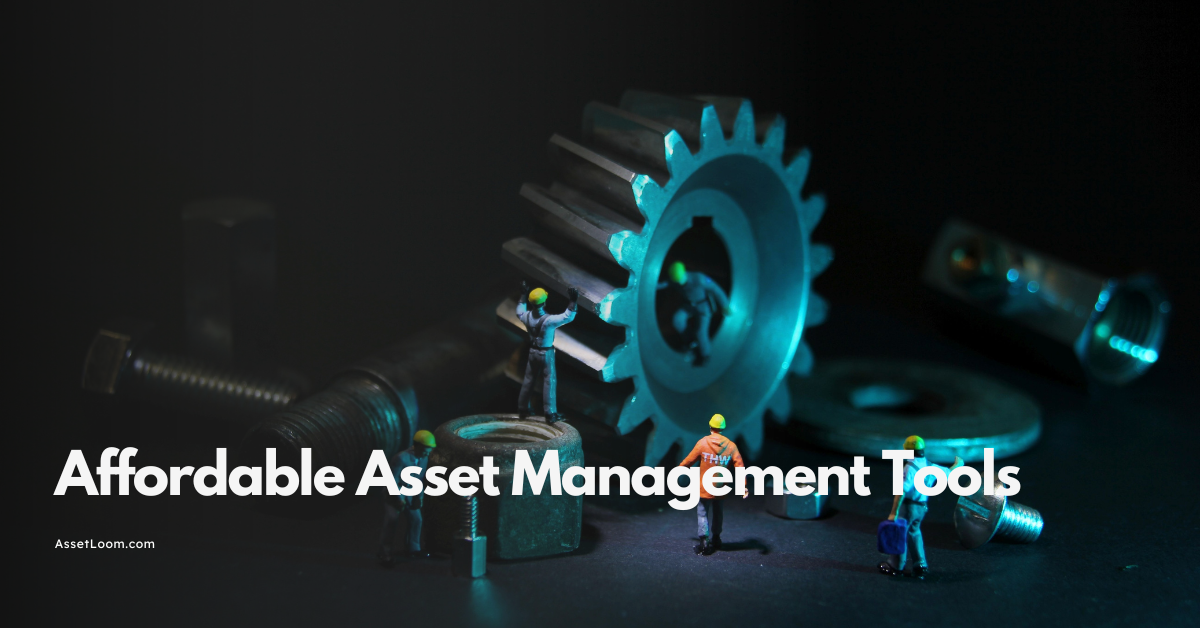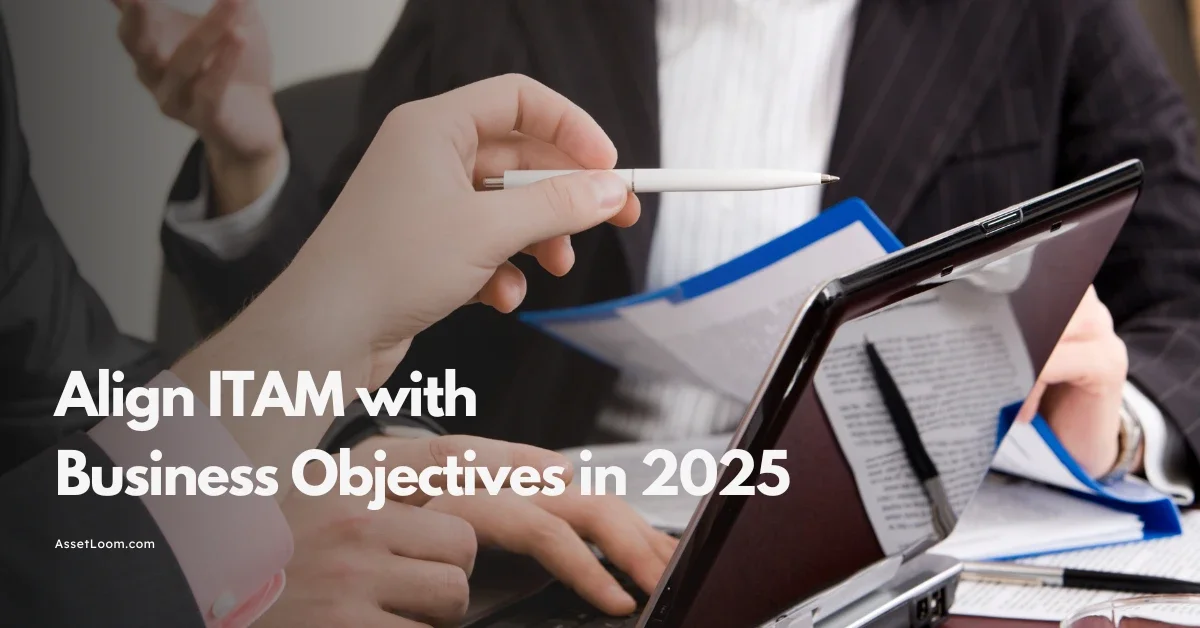AI and the Future of Top IT Asset Management Software
Discover how AI transforms top IT asset management software in 2025. Explore key features and future trends of AI-powered ITAM solutions.
In today’s fast-paced digital environment, businesses rely heavily on technology to operate efficiently. As IT infrastructures grow more complex, managing IT assets has become a significant challenge. That's where IT Asset Management (ITAM) software plays a crucial role. But more recently, a new wave of innovation is reshaping this field: artificial intelligence (AI). In this article, we explore how AI is changing the landscape of top IT asset management software in 2025.
What Is IT Asset Management Software?
IT asset management software helps organizations track and manage their IT resources, including hardware like laptops and servers, software applications, and licenses. Its primary purpose is to ensure visibility, optimize asset usage, maintain compliance with vendor agreements, and reduce costs. ITAM software provides a centralized platform to monitor asset lifecycles, from procurement to retirement, ensuring efficient resource allocation.
Traditional ITAM software relies on manual processes or rule-based automation, such as scanning networks for devices or generating scheduled reports. While effective, these methods can be time-consuming and limited in handling complex, dynamic IT environments. AI-driven ITAM software, found in top platforms like ServiceNow and Ivanti Neurons, introduces machine learning and data analysis to make asset management more intelligent, adaptive, and efficient.
Why AI Matters in IT Asset Management
AI transforms software for IT asset management to learn from data, identify patterns, and provide actionable insights. Unlike automation, which follows predefined rules, AI analyzes complex datasets to make predictions and recommendations. This capability is critical for managing modern IT environments, where assets are spread across on-premises, cloud, and hybrid systems. The key benefits of AI in top IT asset management software include:
- Accuracy: AI reduces errors by analyzing data to identify and classify assets accurately, minimizing discrepancies in inventories.
- Smarter Decisions: AI provides data-driven insights, helping IT teams make informed choices about asset allocation and optimization.
- Proactive Management: AI predicts issues, such as hardware failures or license shortages, allowing teams to act before problems arise.
- Time Savings: By handling complex tasks like data analysis and reporting, AI frees IT staff to focus on strategic priorities.
These benefits make AI-powered ITAM software essential for organizations seeking to streamline operations and stay competitive.
Key AI Features for Top IT Asset Management Software
AI introduces advanced capabilities to top IT asset management software, enabling businesses to manage assets more effectively. Below are the key AI-driven features found in leading platforms.
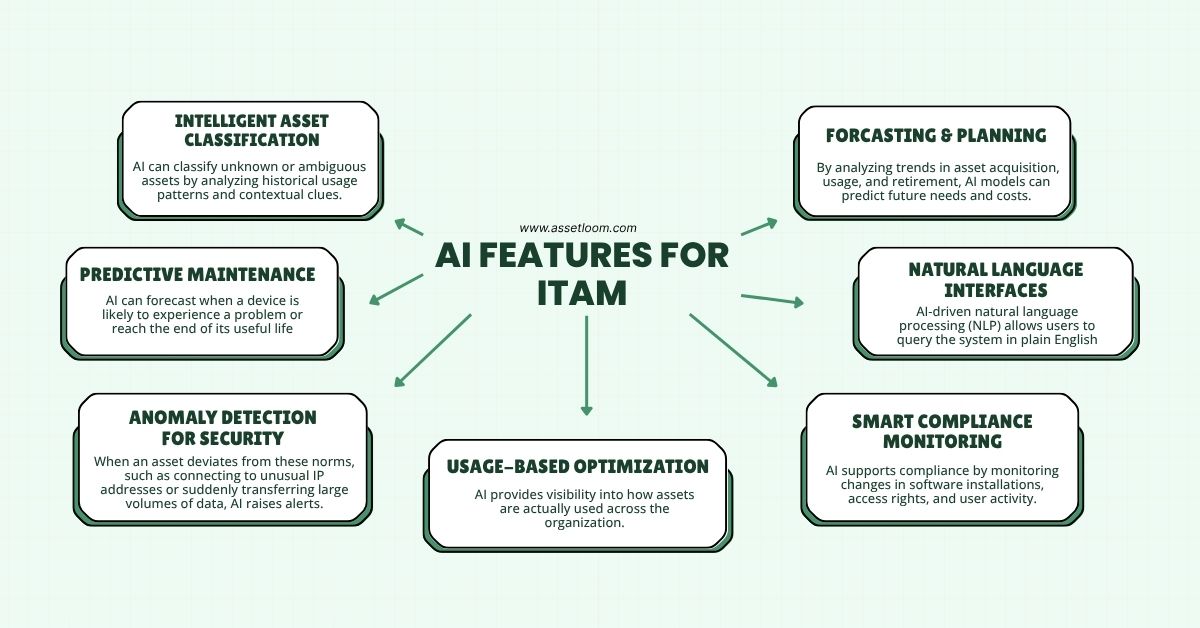
Intelligent Asset Classification
Many discovery tools gather raw data, but it often comes with gaps or inconsistencies. AI can classify unknown or ambiguous assets by analyzing historical usage patterns and contextual clues. This ensures the IT asset inventory stays complete and accurate.
Predictive Maintenance and Lifecycle Forecasting
Traditional maintenance models are either reactive or based on fixed schedules. AI changes this by continuously analyzing real-time performance metrics, environmental data, and historical failure trends. It can forecast when a device is likely to experience a problem or reach the end of its useful life. These predictions allow IT teams to replace or service equipment just in time, minimizing both downtime and maintenance costs. For example, AI can detect a pattern of increasing temperature and CPU usage in a server and flag it for early intervention.
Anomaly Detection for Security
Security and operational anomalies often indicate deeper issues. AI excels at learning what "normal" looks like for each asset in terms of network activity, software usage, and access patterns. When an asset deviates from these norms, such as connecting to unusual IP addresses or suddenly transferring large volumes of data, AI raises alerts. This level of intelligent monitoring helps IT teams detect threats faster and with fewer false positives compared to rule-based systems.
Usage-Based Optimization
AI provides visibility into how assets are actually used across the organization. It can detect idle servers, rarely used software licenses, or workstations with declining engagement. By highlighting these underutilized resources, AI enables cost-saving decisions like license reallocation or hardware repurposing. This data-driven optimization not only reduces waste but also supports sustainability goals by extending the life of existing assets.
Smart Compliance Monitoring
Maintaining compliance with licensing agreements and regulations is a continuous challenge. AI supports compliance by monitoring changes in software installations, access rights, and user activity. It cross-references this information with licensing contracts and regulatory requirements, flagging potential violations in real time. AI also helps generate audit-ready reports that reduce preparation time and increase accuracy, making audits less stressful and more efficient.
Natural Language Interfaces
Many ITAM platforms now include AI-driven natural language processing (NLP) that allows users to query the system in plain English. Instead of learning complex query syntax, IT staff can ask questions like, "Which assets have antivirus software that's out of date?" or "Show me all printers in the marketing department." The system interprets these queries and returns relevant data, improving accessibility for non-technical users and speeding up decision-making.
Forecasting and Strategic Planning
AI can look beyond daily operations to assist with long-term planning. By analyzing trends in asset acquisition, usage, and retirement, AI models can predict future needs and costs. For example, it might identify that a department's devices typically require upgrades every 18 months and suggest procurement strategies accordingly. This strategic insight helps IT leaders allocate budgets more effectively, align asset planning with business growth, and avoid last-minute purchasing decisions.
You may also like this: Top 7 Best IT Asset Management Software
Real-World Benefits for Businesses
When AI is integrated into ITAM software, companies see tangible benefits:
- Cost Efficiency: By identifying unused assets and optimizing license usage, businesses can reduce unnecessary expenditures.
- Faster Response Times: AI-driven alerts allow for quicker resolutions to issues before they affect productivity.
- Better Compliance and Audit Readiness: With real-time monitoring and intelligent reporting, staying audit-ready becomes much easier.
- Improved Productivity: With AI handling repetitive tasks, IT teams can focus on high-impact initiatives.
Challenges and Considerations
While AI-powered ITAM software offers significant benefits, there are challenges to consider when adopting these tools.
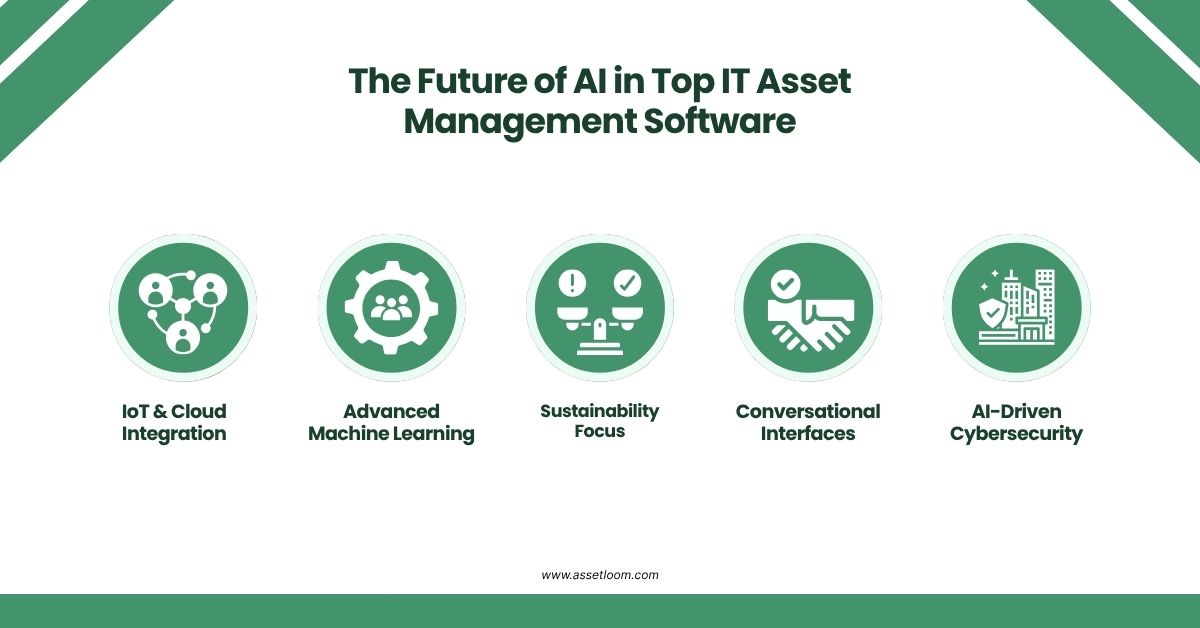
Data Quality
AI relies on accurate and comprehensive data to function effectively. Poor data quality, such as incomplete asset records or inconsistent network information, can reduce the accuracy of AI-driven insights. Organizations must ensure data integrity by maintaining clean, up-to-date records before implementing AI tools.
Implementation Complexity
Deploying AI-powered ITAM software can be complex, especially for organizations with legacy systems or distributed IT environments. Integration with existing platforms, such as ITSM or ERP systems, may require technical expertise and time. Businesses should plan for proper training and support to ensure a smooth transition.
Cost of Adoption
While AI-driven ITAM software can save money in the long run, the initial cost of adoption, including licensing fees and implementation expenses, can be significant. Small businesses, in particular, should weigh the upfront costs against long-term savings and select a solution that fits their budget.
Addressing these challenges requires careful planning, but the benefits of AI-powered ITAM software often outweigh the initial hurdles.
The Future of AI in Top IT Asset Management Software
The role of AI in top IT asset management software is set to expand as technology advances. Several trends are shaping the future of AI-driven ITAM:
- Integration with IoT and Cloud: AI will enable ITAM tools to manage a broader range of assets, including IoT devices and cloud-based services, providing a unified view of complex IT environments.
- Advanced Machine Learning: More sophisticated machine learning models will improve predictive accuracy, enabling ITAM software to forecast long-term asset needs and optimize resource planning.
- Sustainability Focus: AI will support sustainability by identifying opportunities to repurpose or recycle assets, reducing electronic waste and aligning with environmental goals.
- Conversational Interfaces: Natural language processing will evolve, allowing users to interact with ITAM software through advanced chatbots or voice assistants, simplifying asset management tasks.
- AI-Driven Cybersecurity: As cyber threats grow, AI will play a larger role in detecting and mitigating risks, such as identifying suspicious activity across distributed networks.
Related article: IT Security Risk and IT Asset Management: What Every IT Leader Must Know
These advancements will make AI-powered ITAM software even more valuable, helping organizations stay ahead of technological and regulatory changes.
Conclusion
AI is transforming the top IT asset management software by automating routine tasks, improving decision-making, and predicting future asset needs. While many ITAM systems still rely on basic automation, the potential for AI-driven optimization and efficiency is enormous. As AI technologies continue to mature, businesses that invest in AI-powered ITAM systems will reap the benefits of smarter, more proactive asset management.

Subscribe for Expert Tips and Updates
Receive the latest news from AssetLoom. right in your inbox
